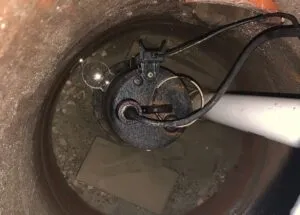How To Choose The Right Sump Pump For Your Kansas City Home?
Sump pumps are an indispensable component of basement water management in many Kansas City homes. With frequent heavy rainfall and fluctuating groundwater levels, these devices help protect your property from water intrusion, subsequent damage, and potential mold growth. As experts in Kansas City heating, cooling, and plumbing services, Climate Control Heating, Cooling & Plumbing is here to guide you through the process of selecting the right sump pump that will provide optimal protection for your home.
This article will explore the essentials of choosing a suitable sump pump for your property, focusing on factors such as pump types, capacity, and additional features. By understanding the nuances of various sump pump options, you will be better equipped to make an informed decision to safeguard your home from potential water damage and ensure long-lasting protection.
- Understand the Basics: Types of Sump Pumps: Sump pumps come in two primary types: submersible and pedestal. Knowing the key differences between these pumps can help you make an informed decision on which one is suitable for your home.
- Submersible Pumps: These pumps are designed to operate underwater, with the motor and pump being sealed within a waterproof housing. Submersible pumps are installed in a sump pit below your basement floor, making them less visible and quieter compared to pedestal pumps. They are generally more expensive but offer higher pumping capacities and a longer service life.
- Pedestal Pumps: A pedestal sump pump has the motor mounted above the sump pit, separate from the pumping mechanism. Pedestal pumps are easier to access and typically less expensive, but they are often less powerful and have a shorter lifespan compared to submersible pumps.
- Assess Pump Capacity and Performance: When choosing a sump pump, assessing its capacity and performance is critical. Pump capacity refers to how much water the pump can move per minute or hour, typically measured in gallons per hour (GPH) or gallons per minute (GPM). A pump’s capacity determines its ability to handle heavy rain and manage water intrusion effectively.
To select a sump pump with the right capacity, take note of the following factors:- The depth of your basement or crawl space.
- The area of your home exposed to potential water intrusion.
- The expected volume of water during heavy rainfall or snowmelt.
- Choose a Reliable Power Source: Sump pumps commonly use electricity to operate, with most models plugging into a standard household electrical outlet. It is important to ensure a stable and reliable power supply to your sump pump, as power outages can occur during heavy rainstorms, leading to pump failure.
To address this concern, consider the following options:- Battery Backup: Installing a sump pump with a battery backup system ensures that it can continue to operate in the event of a power outage. The battery can power the pump for a limited duration, providing temporary protection until the power supply is restored.
- Water-Powered Sump Pump: These pumps use your home’s water supply as an alternative power source. They do not require electricity and can be an effective backup option for homeowners on the municipal water supply.
- Evaluate Sump Pump Features and Technology: Sump pumps offer various features that can enhance their performance, reliability, and ease of use. Consider the following when evaluating sump pump options:
- Automatic Switch: An automatic switch ensures the pump activates when the water level in the sump pit reaches a certain threshold. This feature eliminates the need for manual operation and provides timely water management.
- Material and Construction: Sump pump materials impact durability and corrosion resistance. Models made from cast iron, stainless steel, or thermoplastic offer varying degrees of durability and corrosion resistance, with cast iron being the most durable and rust-resistant.
- Alarm System: A high water alarm can notify you when the pump cannot keep up with water inflow or if it is malfunctioning, enabling you to take corrective action.
- Energy Efficiency: Some sump pumps consume less energy while maintaining optimal performance. Energy-efficient models can help save on your utility bills.
- Consider Professional Installation and Future Maintenance: Proper installation is essential for the optimal performance of your sump pump. Our experienced professionals can assess your specific needs, help you select the right sump pump, and ensure the proper installation. It is also crucial to schedule regular maintenance and inspections to prolong the life of your sump pump and provide reliable performance.
Selecting the right sump pump for your Kansas City home involves understanding the differences between pump types, assessing capacity, choosing a reliable power source, evaluating features, and ensuring proper installation. By considering these factors, homeowners can make informed decisions and invest in the right sump pump to protect their properties from water damage and flooding.
Protection And Peace Of Mind With The Right Sump Pump
Investing in the right sump pump is essential for protecting your Kansas City home from water damage and basement flooding. By understanding the basics of sump pumps, selecting the appropriate capacity and features, and ensuring professional installation, you can safeguard your property and achieve peace of mind.
If you need assistance in selecting and installing a sump pump for your Kansas City home, our experienced team is here to help. Contact us today to schedule a consultation. Let our professional plumbers provide you with the best solution for your sump pumps in Kansas City, MO, ensuring your home remains protected and secure.





